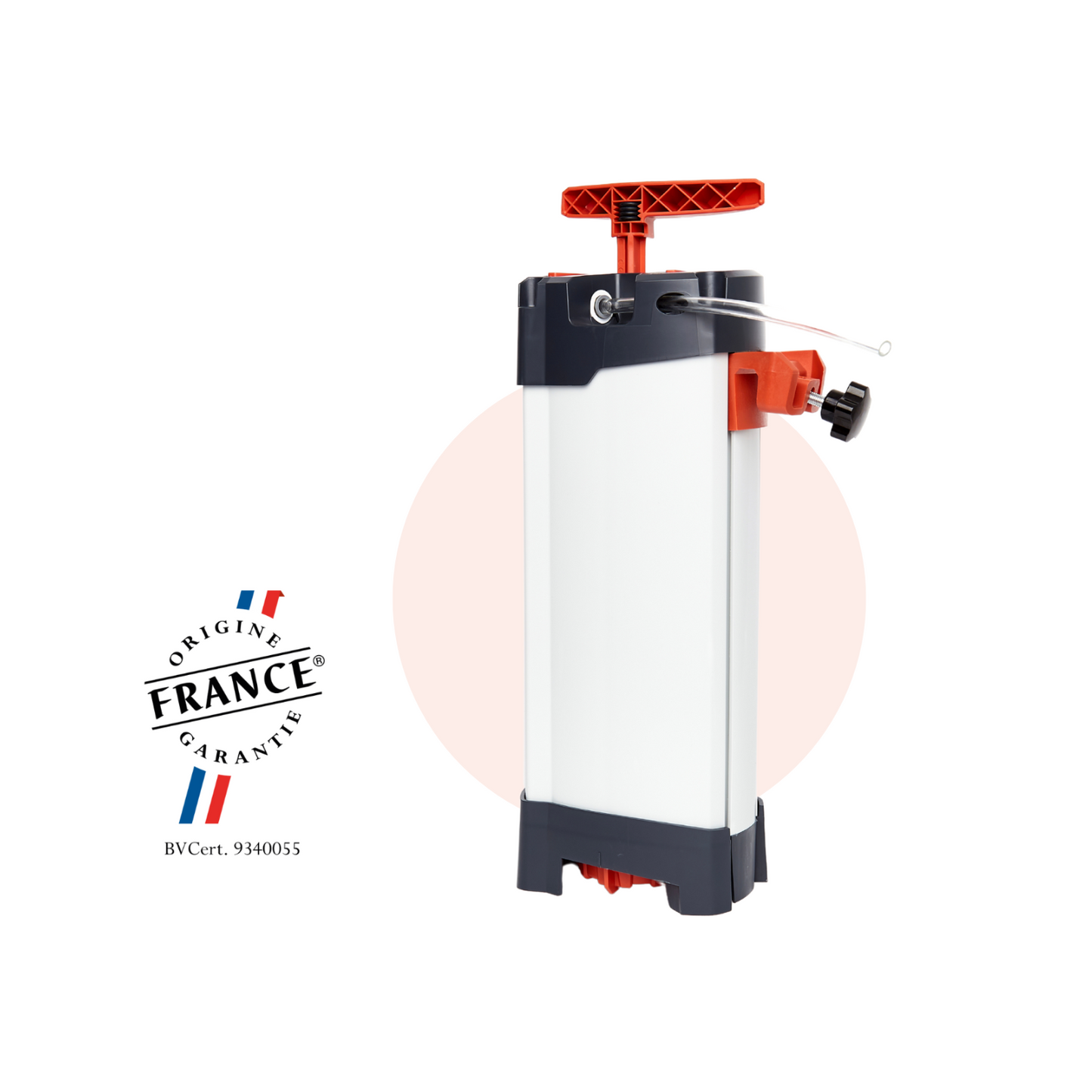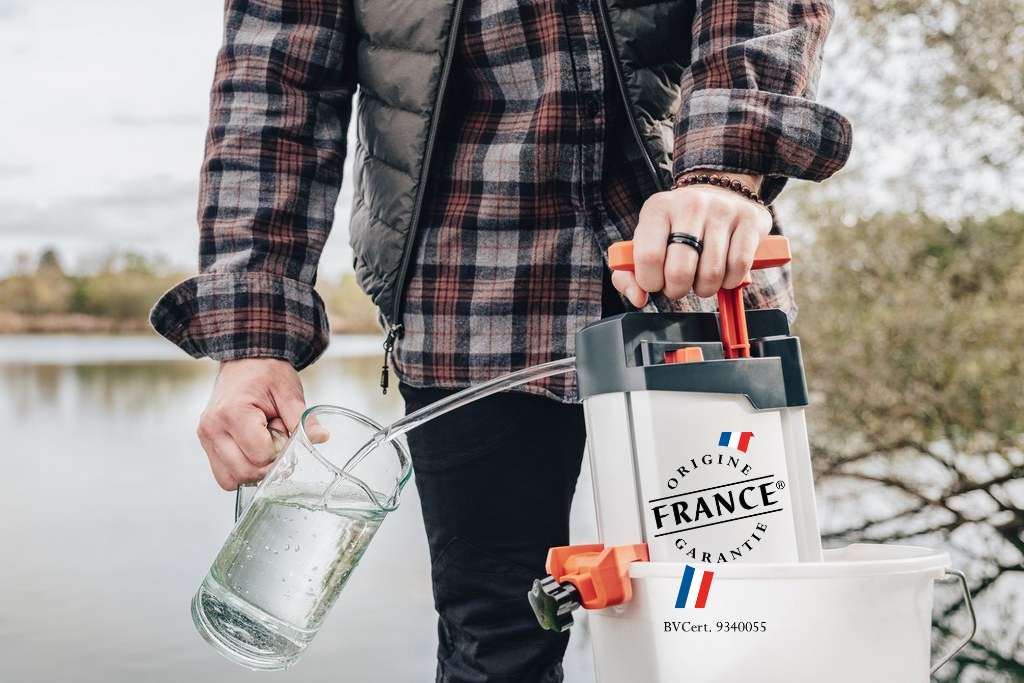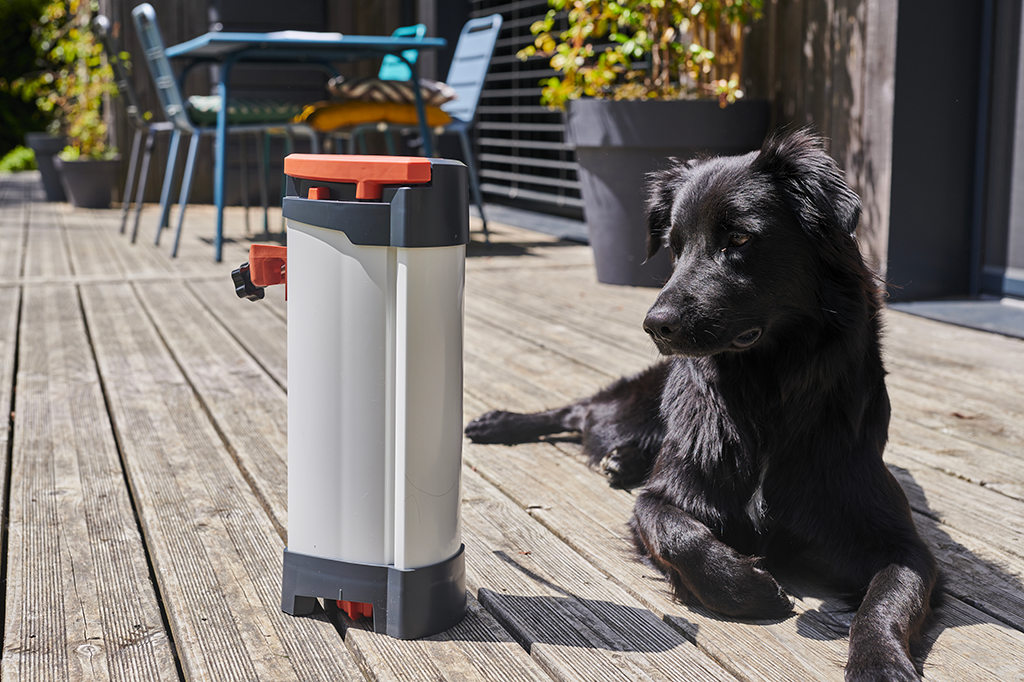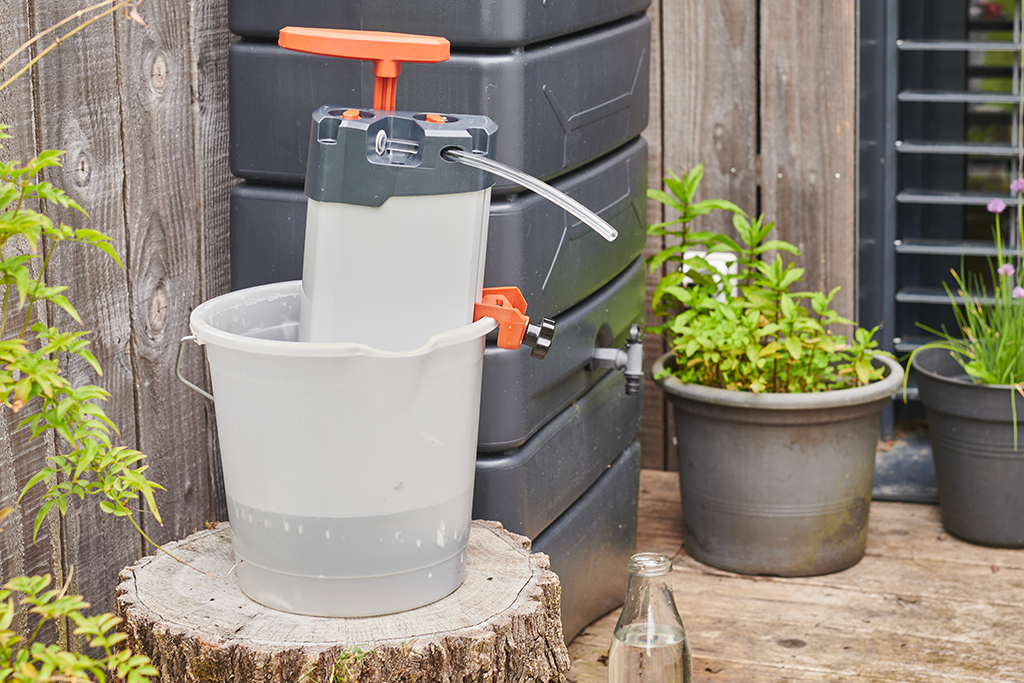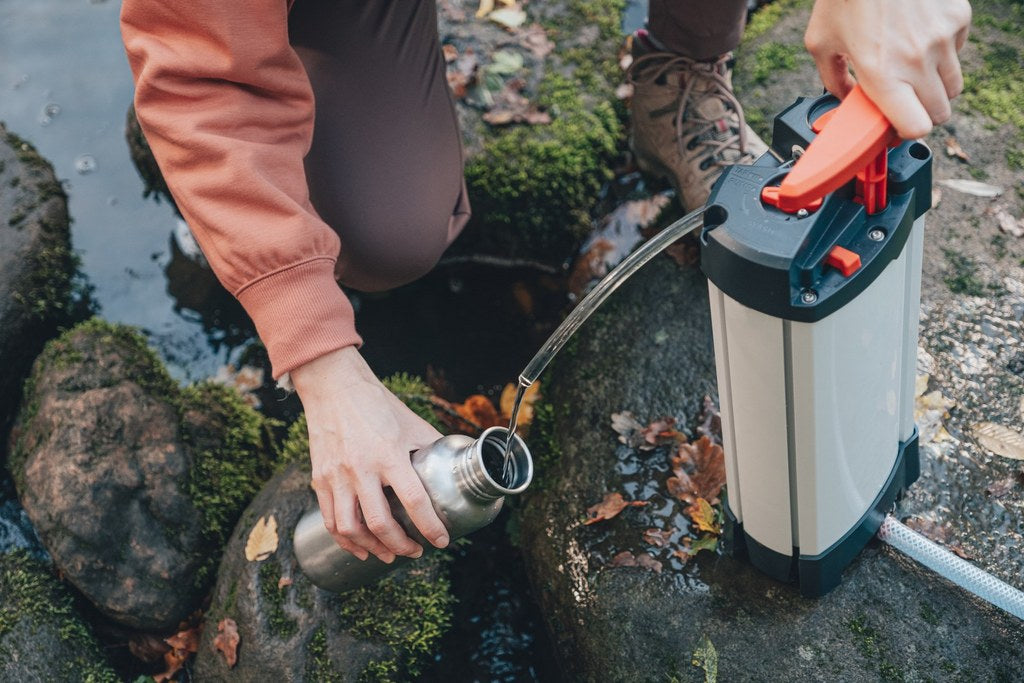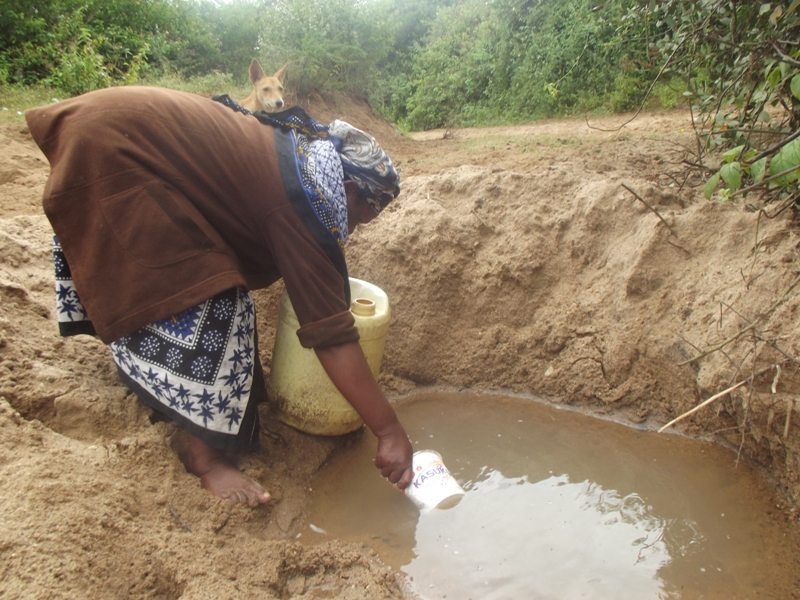
Water contamination
Contaminated water is one of the main causes of death worldwide.
Every year, more than 2 million lives are lost to water-related diseases such as cholera, diarrhoea, typhoid, hepatitis A, bilharzia, polio and many others. These diseases are also responsible for a large proportion of infant mortality, with around 361,000 children dying each year from acute diarrhoea. It is therefore crucial to be aware of the dangers associated with drinking contaminated water.
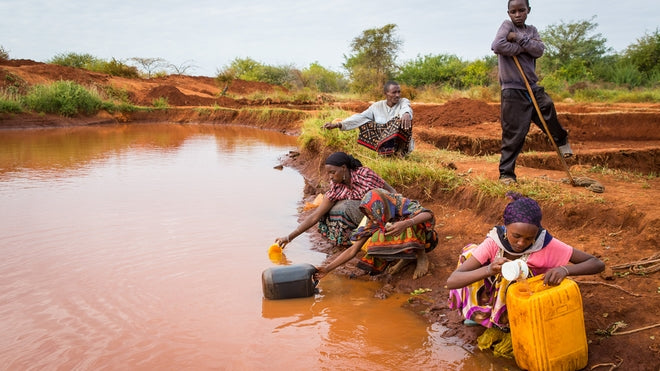
A few definitions
The vocabulary relating to water and its various sources of contamination can sometimes be complex to understand. Here are a few definitions you may find useful:
Biological and chemical contamination
Biological parameters
Pathogen (pathos: disease, genos: origin): Microorganism that causes disease in its host.
Infection: Penetration of a pathogen into an organism or cell. There are various routes of entry. Infection can lead to disease.
Prokaryote (pro: before, karyo: nucleus): Microorganism that does not have a true nucleus. Today's prokaryotes are bacteria and archaea.
CFU: Colony Forming Unit. Unit of measurement characteristic of microbiology
Quality reference: Indicative value showing, in the event of non-compliance, a deterioration in the quality of the water, thus alerting the system, in this case the potability system.
Quality limit: Imperative value. Non-compliance may present a health risk. These risks are assessed by health authorities.
Revivifiable microorganism: Indicator of the overall microbiological quality of water. Revivifiable micro-organisms correspond to all bacteria (but also yeasts and moulds) capable of forming colonies under specified conditions (environment and temperature). This pollution indicator gives an idea of the average bacterial content of the water and serves as a quality reference.
Coliform bacteria: Group of bacteria of telluric and faecal origin. It includes bacteria from the Enterobacteriaceae ("enterobacteria") family, which includes the Escherichia coli species.
Escherichia coli: A member of the Enterobacteriaceae family, Escherichia coli serves as a bioindicator of faecal contamination. This species of bacteria lives in the digestive tract of warm-blooded animals (including humans). The majority of Escherichia coli are not pathogenic, only certain strains are. These pathogenic strains can cause gastroenteritis, for example.
Enteroccocus (intestinal Enterococci): A genus in the Enterococcaceae family, Enteroccocus serves as a bioindicator of faecal contamination. This genus of pathogenic bacteria lives in the digestive tract of mammals.
Pseudomonas aeruginosa: A species of bacteria that can be pathogenic under certain conditions. It is highly resistant to antiseptics. Infection and pathogenicity are particularly important in individuals with weakened immune systems.
Legionella: A type of bacterium that develops in warm water and is responsible for the disease legionellosis. Legionellosis is found when the temperature of the water sampled exceeds 25°C.
Spores of anaerobic sulphite-reducing micro-organisms: Some bacteria are capable of sporulating. The spore is a defensive, resistance form of the bacterium. It enables the bacteria to withstand unfavourable conditions for the vegetative form (classic form) of the bacteria, such as antibiotics, pasteurisation, disinfectants, UV and X-rays, etc. They are present in faeces, waste water and soil. They are used as a quality reference.
Chemical parameters
There are a great many chemical parameters, and not all of them are tested for in all types of samples. So we won't list them all here. To find out the French quality limits and references for all the chemical parameters, you can visit the French government website, where you will find Appendix 1 of the amended Order of 11 January 2007 on the quality limits and references for raw water and water intended for human consumption mentioned in Articles R. 1321-2, R. 1321-3, R. 1321-7 and R. 1321-38 of the Public Health Code.
Firstly, only 3 chemical parameters are permanently monitored in drinking water:
- Conductivity: Electrical conductivity is the ability of an aqueous solution to conduct an electric current. It is used to determine the presence of minerals and ions in general. Soft water is characterised by low conductivity, unlike hard water.
- pH: The pH is used to measure the acidity (or basicity) of water. Water that is too acidic or basic can ultimately be harmful to health. It can also encourage bacterial growth, salt precipitation (limescale formation), etc. It is used as a quality reference.
- Temperature: Why is the temperature of the water measured? Temperature influences many other parameters, such as the solubility of chemical species. The latter is necessary for calculating other temperature-dependent parameters. What's more, a temperature that's too warm can signal a problem. Above 25°C, there is a risk of Legionella proliferation.
The other chemical parameters will depend on the analysis carried out.
- Ammonium (NH4+): Ammonium is the acid form of ammonia (NH3), which is highly toxic. Ammonia is only present at pH values above 9 (pKa of 9.2). It is mainly of agricultural, domestic or industrial (anthropogenic) origin. It is used as a quality reference. Its value changes according to its origin.
- Nitrate (NO3-): Nitrates are an indicator of eutrophication in a watercourse. Too high a concentration of nitrate will lead to a proliferation of phytoplankton, including cyanobacteria. This phytoplankton can resemble a "film of algae" on the surface of the watercourse. Too much growth will make the water opaque, preventing light from reaching the plants resting on the river bed. These plants will then die, as they will no longer be able to photosynthesise. This will lead to a reduction in oxygen in the water and other species (fish, for example) will gradually die out. Nitrates are man-made (agricultural, domestic, industrial).
- Nitrite (NO2-): A reduced form of nitrate, it is highly toxic. Nitrites are not stable and will easily become nitrates, and are very rarely found in watercourses.
- Free and total chlorine: Chlorine is used as a disinfectant because of its persistent nature. This means that as long as there is free chlorine in the water, there will be no bacterial recontamination. Total chlorine includes free chlorine and chlorine that has already reacted (disinfected, by-products). The smell of chlorine in water is not linked to free chlorine (disinfectant) but to chlorine that has already reacted (combined chlorine). Chlorine is sought in analyses for the drinking water network. Chlorine can react and form harmful by-products which are used as quality limits.
- Total Organic Carbon (TOC): TOC corresponds to organic matter, whether animal, vegetable or synthetic. The origin of the pollution depends on whether the organic matter is natural or not. The use of chlorine on water rich in organic matter can contribute to the formation of harmful by-products. TOC is used as a quality reference.
- Volatile Organic Compound (VOC) : We are not interested in VOCs of biotic ("natural") origin. What we are looking for here are man-made volatile organic compounds. They are found in paint, detergents, cosmetics and construction materials, as well as in the manufacture of many other products. Although the primary route of exposure is via the respiratory or skin route, they are nevertheless sought in water, because they are harmful and, in some cases, carcinogenic. There is no quality limit or reference for an overall concentration of VOCs, but for certain very specific VOCs.
- Water facies: Based on its mineral composition, it is possible to assign a facies to a water. In other words, it is possible to characterise water in a more precise way than soft/hard, aggressive/entarring.
- Metals: Metals (metalloids) are present in water in oxidised form (with some exceptions). For example, in the event of acid rain, zinc present on gutters can change from its solid form, Zn, to its oxidised aqueous form, Zn2+. Chronic exposure can be dangerous, as can exposure to high concentrations. Various illnesses can result from ingesting metal-polluted water. They depend on the metal (metalloid) in question. The vast majority of metals are used as quality limits. The metals used as quality limits or references are:
- Aluminium
- Antimony
- Arsenic
- Barium
- Boron
- Cadmium
- Chromium
- Copper
- Manganese
- Mercury
- Nickel
- Lead
- Selenium
- Sodium (alkali metal)
- Iron
Pesticides & metabolites : Pesticides used in agriculture, but also by private individuals through fungicides, herbicides, etc., can end up in our waterways. A pesticide is not necessarily toxic to humans. However, as it travels through the watercourse, the pesticide may undergo various reactions and the initial molecule may change. This new molecule, called a metabolite, can be toxic. What's more, two or three molecules separately may not be toxic, but together they may become so. Today, a large proportion of French rivers are polluted by pesticides and metabolites. In several communes, tap water exceeds the quality limits set. It's important to remember that the limits set are very strict, and that exceeding them is alarming, but does not necessarily present a health risk. Chronic exposure, however, is strongly discouraged and may present significant long-term risks. So it's important to inform yourself and take precautions. Being informed means knowing whether the water you drink is polluted and to what extent. To protect yourself, you need to know what the local authority and the authorities responsible for the drinking water treatment plant are going to do to alleviate the problem, and whether they are acting accordingly. But it is also possible to reduce the concentration on an individual scale by installing filtration systems that will bring the quantity of pesticides and metabolites below the threshold set by the quality limits, or even down to 'trace' levels. Activated carbon filters or osmosis units, for example, can be used. It's important to get the right information on these subjects from the right people before you buy. An osmosis machine, for example, needs energy to operate and removes not only pesticides but also minerals from the water. The following reports can be used to find out about the pesticides present in local communities:
- ANSES (Agence nationale de sécurité sanitaire de l'alimentation, de l'environnement et du travail) report, which quantified pesticide levels, metabolites and relevant products in water intended for human consumption during a 2-year campaign
- An interactive map based on the results of the ANSES report
- A report on the quality of tap water with regard to pesticides produced by the Ministry of Health and Prevention
- An Adonis map on the use of pesticides in France by department
It is also possible to look at the results of the ARS (Regional Health Agency) for your department, or even your commune. However, each ARS decides which pesticides it will quantify.
Microcystins: Toxins produced by certain cyanobacteria. Cyanobacteria are bacteria found mainly in eutrophic surface waters. They are often confused with algae and are even referred to as "blue-green algae". The quantification of cyanobacteria can lead to bathing bans, but there is currently no quality limit or reference for water intended for human consumption.
Turbidity: Turbidity is a measure of whether the water is more or less turbid. It is opposed to clarity. It is measured in NFU (Formazin Nephelometric Unit). But it can also be measured in other units (NTU, JTU, etc.). The NTU unit is quite commonly used, but the regulation is in NFU.
- To go from one to the other:From 0 to 20 NFU: 1 NFU = 1 NTU
- Over 20 NFU: 1 NFU = 0.6 NTU
Empirical relationships make it possible to quantify turbidity as a function of the concentration of suspended solids (SS). Turbidity is used as a quality limit and reference.
Dealing with water contamination
ORISA® purifies all fresh water
At Fonto de vivo, we designed ORISA®, an innovative water purifier capable of filtering out all the biological contamination present in fresh water. Deployed by NGOs on every continent, ORISA® helps to limit the spread of water-borne diseases and provide access to clean water for populations in need.
- Filter 3 L/min
- Autonomous
- Sustainable
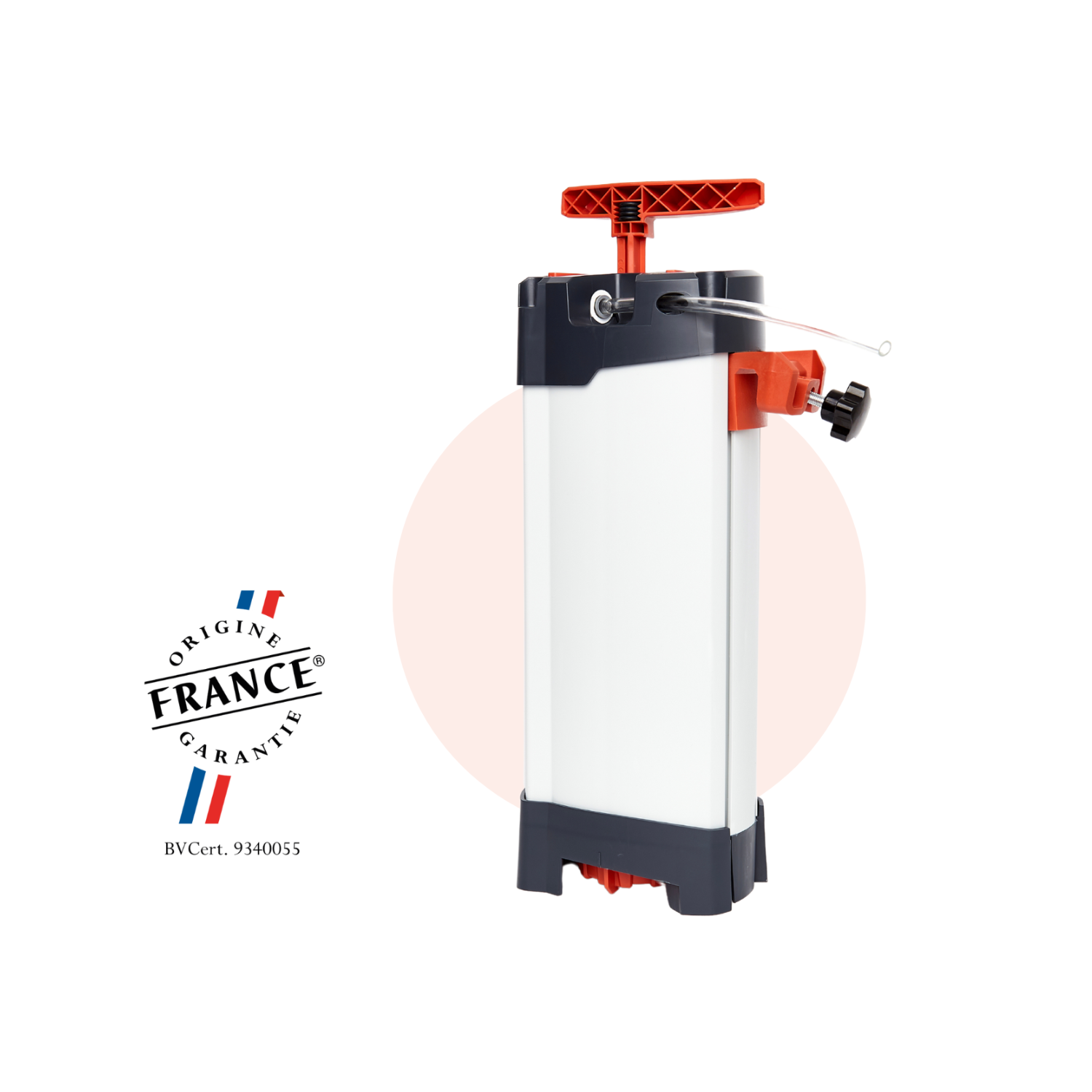
Fonto de vivo
ORISA® water filter made in France
- Filters fresh water
- Filters out biological contamination
- Manual operation
- Up to 3L of water per minute
